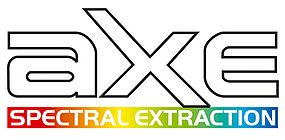
AXe Spectral Extraction
Encyclopedia

Advanced Camera for Surveys
The Advanced Camera for Surveys is a third generation axial instrument aboard the Hubble Space Telescope . The initial design and scientific capabilities of ACS were defined by a team based at Johns Hopkins University. ACS was assembled and tested extensively at Ball Aerospace & Technologies Corp...
(ACS) on the Hubble Space Telescope
Hubble Space Telescope
The Hubble Space Telescope is a space telescope that was carried into orbit by a Space Shuttle in 1990 and remains in operation. A 2.4 meter aperture telescope in low Earth orbit, Hubble's four main instruments observe in the near ultraviolet, visible, and near infrared...
(HST). aXe is distributed as a subpackage for IRAF
IRAF
IRAF is a collection of software written at the National Optical Astronomy Observatory geared towards the reduction of astronomical images in pixel array form. This is primarily data taken from imaging array detectors such as CCDs...
(Image Reduction and Analysis Facility - a general purpose software system for the reduction and analysis of astronomical data). The various aXe task can be executed within PyRAF, a command language that runs IRAF tasks and is based on the Python programming language
Python (programming language)
Python is a general-purpose, high-level programming language whose design philosophy emphasizes code readability. Python claims to "[combine] remarkable power with very clear syntax", and its standard library is large and comprehensive...
.
The aXe package consists of several task, and every task performs a specific reduction step on the data to produce the final, extraced spectra. aXe is semiautomatic reduction system. After preparing all necessary input, the spectral reduction is done in an automatic way. The user can then analyse and controle the spectra and, if necessary, re-run aXe with slightly changed parameters until a satisfactory result is achieved.
A deep ACS WFC grism
Grism
A grism is a combination of a prism and grating arranged so that light at a chosen central wavelength passes straight through. The advantage of this arrangement is that one and the same camera can be used both for imaging and spectroscopy without having to be moved...
image can contain detectable spectra of several thousands objects. Checking each individual spectrum is very tedious. To help users analyzing the full wealth of their data the additional aXe task aXe2web was developed. This tool produces browsable web pages from reduced spectral data to enable many hundreds of spectra to be examined quickly and discerningly. This tool can be used for a quick look or as preview facilities in data pipelines, databases or even for virtual observatories.

